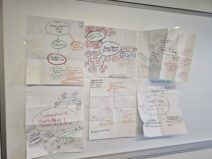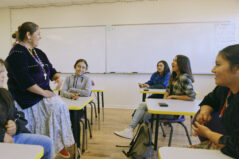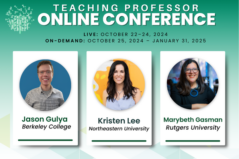
The Importance of Teaching and Learning in the Classroom
“The teaching life is the life of the explorer, the creator, constructing the classroom for free exploration. It is about engagement. It takes courage. It

“The teaching life is the life of the explorer, the creator, constructing the classroom for free exploration. It is about engagement. It takes courage. It

Co-Authored By Aaliyah Lee-Raji, Amadis Canizales, Amaiya Peterson, Andrew Stillwell, Anessa Mayorga, Aniyah Campbell, A’niyah Leather, Anna Fleeman, Brookelyn Vivas, Cassandra Mathieu, Christian Bennett, Clio

The power of human stories is undeniable. Whether conveyed through music, art, writing, or oral storytelling—sharing one’s lived experience can have a profound impact. Stories

Data has become the cornerstone of decision-making and institutional strategy in today’s higher education landscape. From tracking retention rates to measuring academic performance, data offers

Students need to demonstrate their competencies in areas beyond traditional classroom assessments. In an era of advanced technologies and artificial intelligence, the use of these

Teaching is a dynamic endeavor. As instructors, we are continually looking for ways to grow and improve.

“What you appreciate appreciates” (Twist, n.d.). One of the practices I have employed in most of my classes during the past several years is “the appreciative close,” which is an offshoot of “the appreciative pause” recommended by Stephen Brookfield (Brookfield, 2015, pp.95-96).

Like birthdays, anniversaries are occasions for reflection, and as I approach the fifth anniversary of my teaching career, I find that my thoughts are drawn to the things that I did badly.

Has teaching improved? It’s a question I’ve been putting to myself here on the backside of a long career.

Many academics are aware of altering learning styles of those on the “Autism Spectrum.” When a student with Autism arrives in the classroom this changes how interactions occur between a neurodiverse (ND) student and a neurotypical (NT) instructor.

Explore the dynamic sessions of the Teaching Professor Online Conference with this infographic! From October 22–24, 2024, join virtually for plenaries, breakout sessions, and networking
Get exclusive access to programs, reports, podcast episodes, articles, and more!